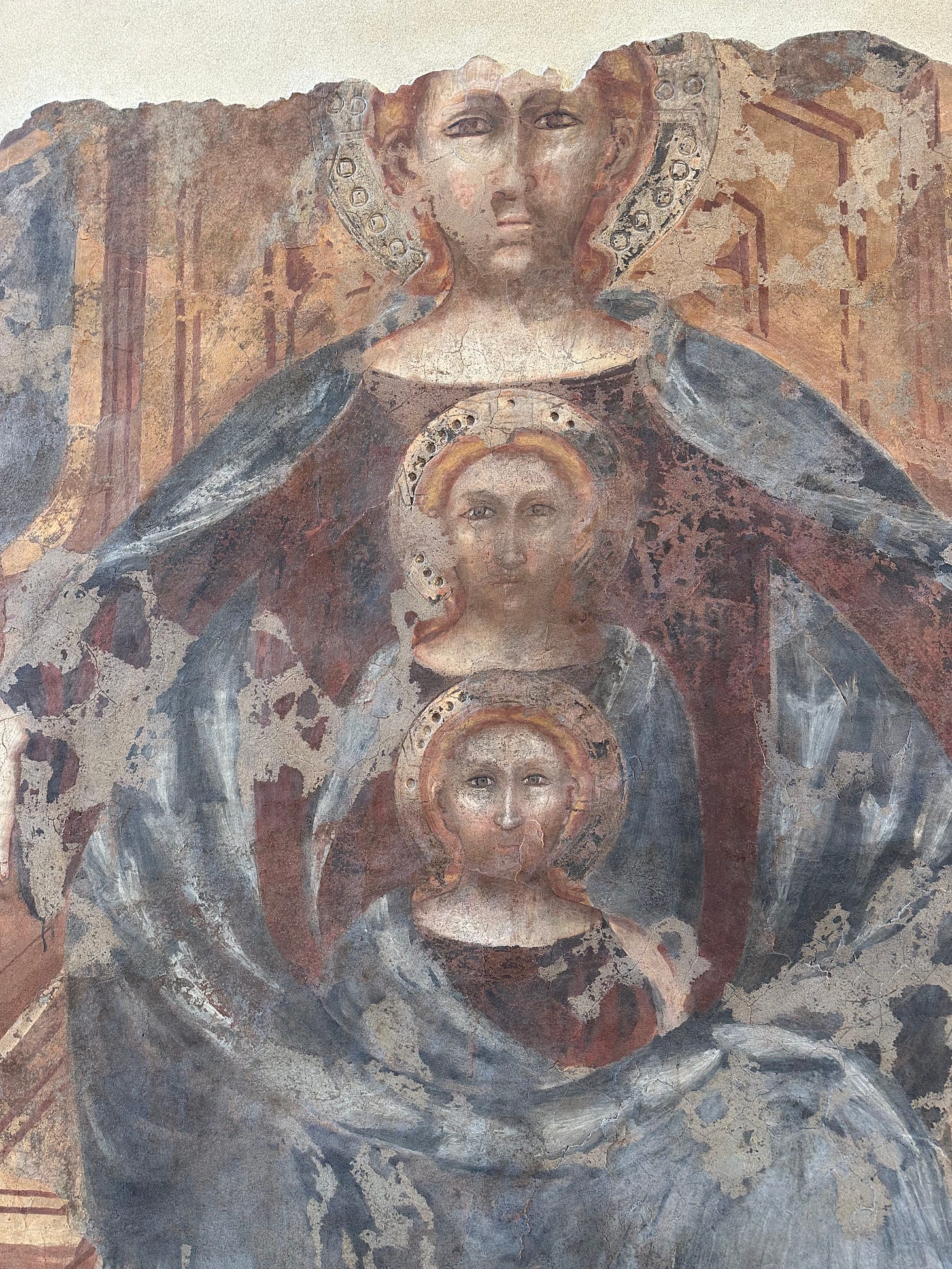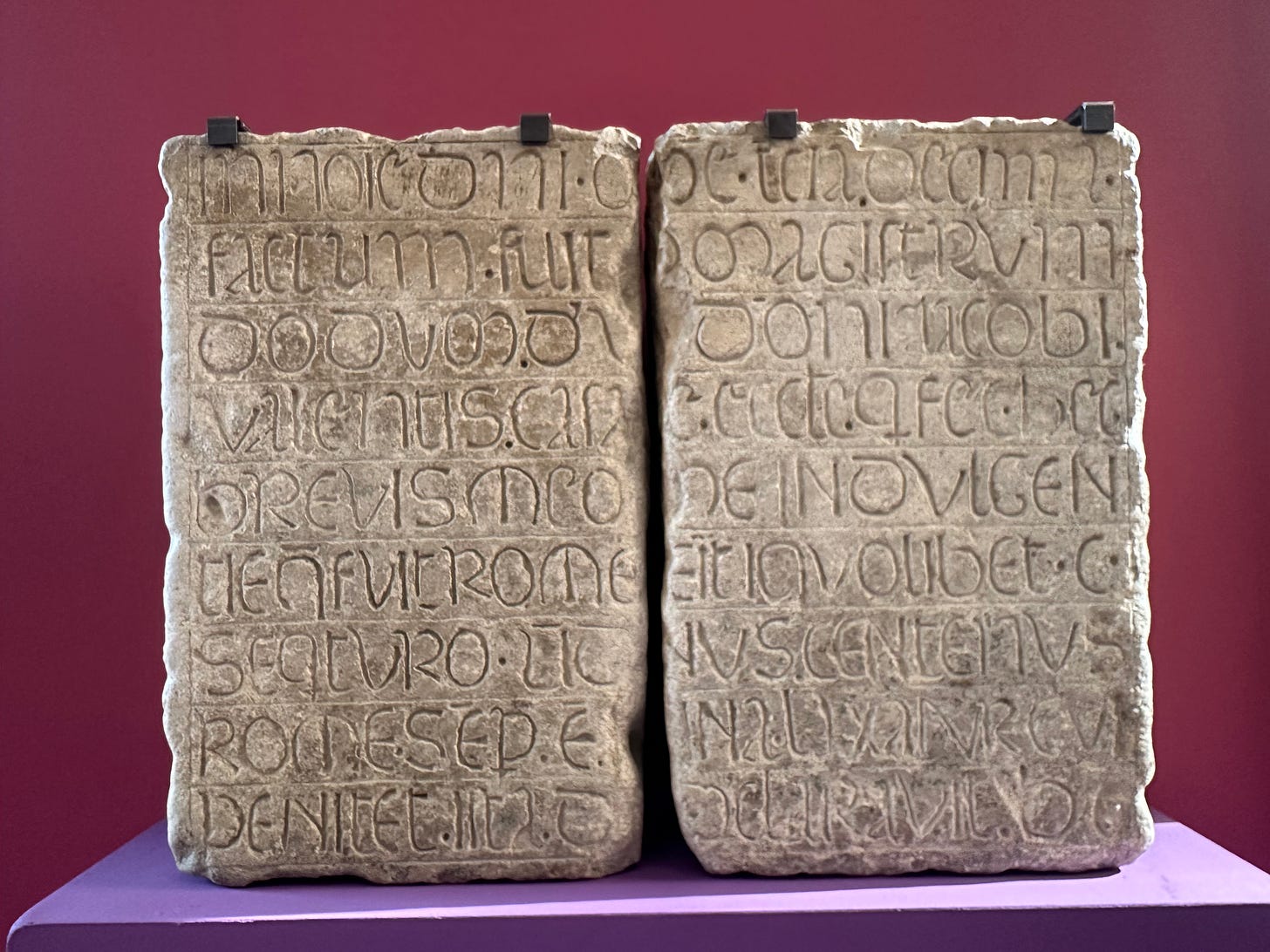1350: The Jubilee without a Pope
1350. Il Giubileo senza papa.
Exhibition at the (always excellent) Museum of the Imperial Fora on until 1 February 2026.
Rome in the fourteenth century was riddled with plague, war, and natural disaster. The city languished in a slough of despond peopled by the Four Horsemen of the Apocalypse. It must, I often think, have felt like the end of the world.

The century had begun with the optimistic proclamation by Pope Boniface VIII of the first Jubilee, but not two years after the lucrative Holy Year had concluded, in 1303, Boniface was dealt the schiaffo di Anagni.

Aged seventy or so he was seized and imprisoned at Anagni by the Colonna family, with the collaboration of Philip the Fair, the King of France on the verge of excommunication. The Pope was dealt a blow (schiaffo) which is usually considered to have been more humiliating than physically damaging, though one can imagine Giacomo Colonna, to whom the blow is usually attributed and who went by the nickname “Sciarra”—meaning “brawl”— didn’t have the lightest of touches.
Keep reading with a 7-day free trial
Subscribe to Understanding Rome's Newsletter to keep reading this post and get 7 days of free access to the full post archives.


